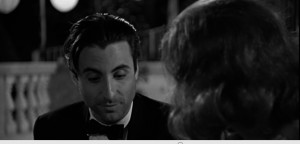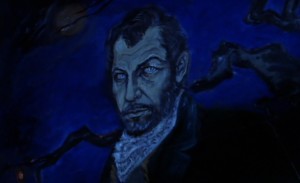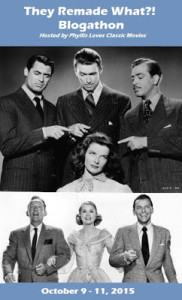Writing my post last week sent me off on a tangent, so this time I’m changing the plan slightly and going back to what, in 1993, was one of my favorite movies.
Why Found-Again? Honestly, talking about my love for Kenneth Branagh/Emma Thompson makes me feel like I’m about a thousand years old. (Imagine the Highlander posts I could have written if I were! Speaking of tangents….)
I was fifteen when Siskel & Ebert reviewed Branagh’s Henry V and vividly remember the discussion about how Branagh might be the next Olivier and was otherwise an up-and-coming cinematic Big Thing. For some reason—I’m not a huge fan of the play even after several Shakespeare classes, so it wasn’t Henry as such—I found this very exciting. Two years later, I was also watching Siskel & Ebert when Dead Again, Branagh’s new movie with his then-wife Emma Thompson, got worse reviews.
I didn’t see it till I was nineteen, but once I did, I was hooked. The apparent king and queen of movies in a noirish supernatural thriller—how could I be anything but smitten?
The Premise: A mute, traumatized woman (Thompson) shows up at an orphanage with no apparent memory of who she is; the nuns turn to one of their former charges, hard-boiled PI Mike Church (Branagh), for help. The further Mike digs into the case, however, the more it seems the trauma might have its roots in a famous murder from 1948, linked to the woman’s past life…or his own. But will forgotten crimes be reincarnated as well?
From a stylistic perspective (which readers have probably deduced I have little ability to analyze, but onward!), Dead Again hits all the classic noir beats: the LA setting, the Old Hollywood glamor of the flashback sequences, the dark corners and plot twists and dramatic camera angles.

The cast is likewise great, with the two leads joined by Derek Jacobi as a chiseling antique dealer/hypnotist, Wayne Knight as Church’s friend, Andy Garcia as a 1940s reporter who gets too involved, and a great turn by Robin Williams as a cantankerous ex-shrink who works in a grocery store. You shouldn’t have slept with that patient, pal.
That said, rewatching Dead Again is a little like rewatching Highlander for me: once there’s enough distance from the initial adrenaline rush, doubts begin to creep in. Some of the events seem a little disconnected from each other, in that way where the story makes more sense when you describe it aloud than when you’re watching it on the screen. And then there’s the plot twist, which is not quite as twisty in 2015 as it was in the early 1990s.
The Verdict: Be aware that it comes from someone who fretted over the Branagh-Thompson divorce in a way I’ve never cared about famous people before or since when I say that Dead Again is… just a little goofy. It seems to have moved into that category of movie that I don’t mind watching alone, but am slightly embarrassed to show to other people; the very things I love about it are all a bit embarrassing to explain, and the whole thing seems so dependent on mood.

I’d hoped a re-viewing after several years’ abstinence would put me back in touch with everything I adored about the film, but it didn’t quite happen.
On the other hand, the movie and even the trailer still give me chills. I suppose for a movie about reincarnation, hope really might spring eternal.
Might go well with: Little hors d’oeuvres. You thought I was going to make a twice-baked potato joke, didn’t you?
Next time: Curses!


















